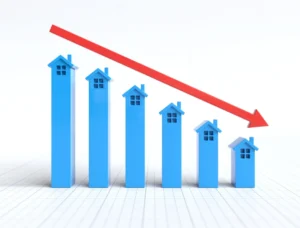What makes a market favorable (or not) for landlords?

Is This a Landlord-Friendly Market?
The real estate market is always shifting, and as a multifamily investor, one of the biggest questions you should be asking is: Is this a landlord-friendly market? The answer can determine everything from your rental income stability to how easily you can evict non-paying tenants and adjust rent prices. Let’s break down what makes a market favorable (or not) for landlords and how you can position yourself for success.
What Defines a Landlord-Friendly Market?
Not all markets are created equal. Some cities and states lean tenant-friendly, meaning strong rent control laws, eviction protections, and legal obstacles that can make life more difficult for landlords. Others are landlord-friendly, where property owners have more flexibility with rent increases, lease enforcement, and eviction processes.
Key factors that make a market landlord-friendly include:
✔ Minimal Rent Control: Few restrictions on how much and how often landlords can raise rent.
✔ Efficient Eviction Process: A clear, legally supported process that allows landlords to remove non-paying tenants quickly.
✔ Lower Property Taxes: High property taxes eat into your bottom line, so investor-friendly areas keep them reasonable.
✔ Short Vacancy Periods: Markets with high demand and low supply mean units don’t sit empty for long.
✔ Favorable Regulations: Fewer bureaucratic hurdles to owning and managing rental properties.
2025’s Most Landlord-Friendly States
If you’re looking for strong investment markets, consider these states where landlords have the upper hand:
🏡 Texas – No rent control, fast eviction process, and booming rental demand.
🏡 Florida – Favorable laws for property owners and no state income tax.
🏡 Tennessee – Low property taxes and minimal rental regulations.
🏡 Arizona – Strong population growth and investor-friendly laws.
🏡 North Carolina – Growing rental demand with flexible landlord policies.
Get a Free Multifamily Loan Quote
Access Non-Recourse, 10+ Year Fixed, 30-Year Amortization
What If You’re Investing in a Tenant-Friendly Market?
If your ideal market leans tenant-friendly, don’t panic. There are strategies to protect your investment and still see strong returns:
Screen Tenants Thoroughly – Avoid costly evictions by carefully vetting potential renters.
Use Ironclad Lease Agreements – Work with a real estate attorney to draft leases that clearly outline responsibilities.
Invest in High-Demand Areas – Tenant-friendly markets still have profitable pockets where demand outweighs regulation.
Leverage Rent Increases Smartly – Even in rent-controlled areas, timing and strategy can help maximize rental income.
Bottom Line
Understanding whether you’re in a landlord-friendly market can make or break your investment success. The key is staying informed, choosing the right locations, and adapting your strategy as regulations change.
FAQ
Q: Should I avoid tenant-friendly markets entirely? A: Not necessarily. While landlord-friendly states offer more flexibility, high-demand areas like New York or San Francisco can still be profitable if approached strategically.
Q: How do I protect my investment in a changing market? A: Diversify your portfolio across multiple states, work with property management experts, and stay updated on legal changes.
Q: Is now a good time to invest in multifamily? A: Absolutely. With rising housing demand and rental shortages, multifamily remains one of the strongest asset classes for investors in 2025.
Source: Multifamily Intelligence













 Accessibility
Accessibility